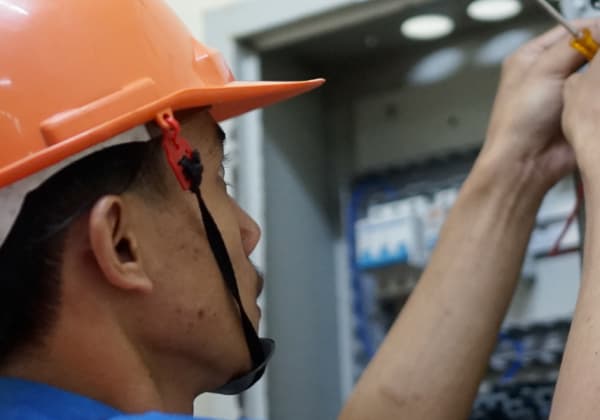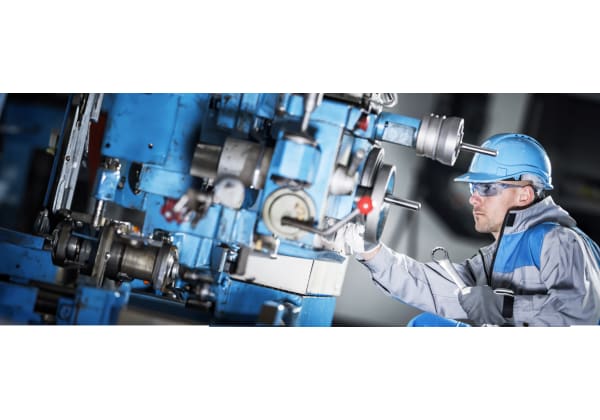- Published 12 Jan 2024
- Last Modified 12 Jan 2024
- 7 min
Reliability-Centred Maintenance
If you’ve ever felt it’s inefficient to give all your industrial equipment basically the same level of maintenance in terms of regular downtime and part replacements, you’re not alone. With Reliability-Centred Maintenance you can determine exactly what each of your assets needs in order to reliably deliver what you need, and the most cost-effective approach to that. This guide will outline what that maintenance strategy involves.
%20Strategies/RCM_Strat_5120_x_600.jpg)
Reviewed by David Carmichael, Solution Engineer (December 2023)
There are many schools of thought on industrial maintenance strategy. Reliability-Centred Maintenance (RCM) is one based on specific equipment failure modes and their prevention. It involves determining the full costs of each possible failure mode and assigning each one a maintenance best practice that costs less than that failure.
What is Reliability-Centred Maintenance?
Unlike types of maintenance strategies that apply sweeping maintenance requirements across many different types of equipment, Reliability-Centred Maintenance considers what care each asset needs to avoid failing to meet its requirements. RCM requires a detailed analysis of each of your assets to determine how, why, and how often each one can fail, and the most economical way to avoid the specific costs of those failures.
Reliability Centred Maintenance benefits include reduced and better distributed maintenance costs, managed and reduced downtime, longer equipment life, and, simply, being able to rely on your equipment.
Examples of RCM
Some examples of failure modes and an appropriate RCM approach for them include:
Potential issue: A high-speed driveshaft needs replacement due to surface damage from excessive vibrations.
- Costs: High-cost, long-lead-time item to replace
- RCM approach: Install comparatively lower cost vibration sensors to continuously monitor the health of the machine and investigate and address detected abnormalities (predictive maintenance)
Potential Issue: Conveyor belt shutting down due to failed, leaking bearing.
- Costs: All operation is ceased, meaning immediate, cascading loss of revenue
- RCM approach: Adopt regularly scheduled (but brief) system shutdowns to inspect and replace bearings as needed (preventative maintenance) and institute a regular lubrication regime
Potential issue: Light bulb burning out.
- Costs: The effect on operations is negligible
- RCM approach: Equally negligible is the cost of inventory and the replacement time (running to failure)
Origins of RCM
Like other types of maintenance, RCM was born out of a desire to improve a particular industry. RCM originated in the airline industry in the 1970s and it aimed to reduce the rate of jet aircraft crashes. It sought to change the industry’s maintenance paradigm away from considering all machines and parts as having a fixed operating lifetime (often proving to be untrue in practice, sometimes disastrously so) and towards a philosophy of identifying failure methods, likelihood, consequences, and methods of prevention.
The concept gained support from the United States Department of Defense, grew in popularity, and was eventually codified in the SAE JA1011 standard.
Implementing an RCM Strategy
Implementing RCM involves identifying your crucial equipment and its deliverables, how it could fail to meet them, why and how often that would happen, and an appropriate maintenance strategy that would cost less than those failures.
Select Equipment
What equipment do you rely on the most? Determining that is at the heart of Reliability-Centred Maintenance. For each asset, assess how crucial it is for your business and what the consequences of its downtime would be.
Consider factors such as:
- Its cost to replace
- Whether it has a backup or redundancy
- Its impact on operations
- Costs of any of its previous breakdowns (financial, downtime, and workplace chaos and stress)
The next step is to identify the failure modes of each piece of equipment. That is, how would it be considered failing to do its job? For example, an industrial lathe’s failure modes would include all of the following:
- Failing to activate (unable to cut the material it’s required to cut)
- Not operating at a sufficient speed (unable to do its expected work at a satisfactory rate)
- Wounding a worker due to high-speed material coming loose (failing to meet its health and safety standards)
Assess Causes of Failure
Once you’ve identified the failure modes for your critical equipment, the next phase of implementing RCM is to work out what the causes of those failures could be, and their likelihood of occurring. Each failure mode can have multiple causes of failure. If a lathe is failing to spin fast enough, for example, the cause could be a loose belt or a lack of lubrication.
The next step will take some judgement. You’ll need to rank each failure cause’s probability and its failure mode’s severity. This will determine which type of maintenance strategy you select for mitigating these failures. Plotting likelihood and severity in a risk priority chart is a good way to do this since you can establish coloured zones for how to address different scenarios.
Choose Maintenance Strategies
Once you’ve laid out your critical equipment, its failure modes, and its causes of failure, you’ll need to choose from different types of maintenance strategies to make an RCM plan for each asset. These can include proactive maintenance (predictive maintenance or preventative maintenance) and reactive maintenance (run-to-failure). Weigh the costs of each one against the identified failure risks and costs, and judge which maintenance strategy makes the most sense for your business. This will optimise your ongoing maintenance costs (the whole goal of RCM).
Predictive Maintenance
Predictive maintenance makes extensive use of condition monitoring and uses machine learning to model the system. Through advanced algorithms you can detect your equipment’s problems in their early stages when they’re far less costly to fix. This does require high upfront costs for instrumentation, as well as ongoing costs of software and its users, but they can be well worth avoiding breakdown costs.
A principal example of predictive maintenance is vibration monitoring. Abnormal vibrations are often key indicators of developing problems, so by monitoring your machines’ shafts and bearings in this way you can predict and prevent failure modes.
Preventative Maintenance
Preventative maintenance establishes service schedules for equipment based on things like fixed dates, hours of operation, or certain conditions (such as a certain detected airflow restriction). Such a maintenance plan could feature inspection and service for air conditioners every 1,000 operating hours and yearly cleaning of ductwork, for example.
Set up correctly, this can be a foolproof maintenance strategy since it should detect all issues in due time. It does mean frequent maintenance costs, though, so that must be considered when selecting this approach for equipment.
Run to Failure
Running to failure is just that: allowing equipment to run until it fails, and then replacing it. This is a corrective maintenance strategy, and it’s what’s done for equipment and failure modes that weren’t identified as the highest priority ones; equipment you don’t rely on to an extreme extent.
With run-to-failure, you decide that it is acceptable to bear the costs and downtime (and their unpredictability) of replacing equipment when it fails since the costs of maintenance will be omitted. This is indeed an acceptable approach if there are no health or safety concerns. Such a system should have redundancy and spare parts in place to minimise downtime and the costs of quickly shipping in crucial parts. Light bulbs, for example, serve an important role but can be quite practically run to failure due to their minimal replacement costs.
As with all types of maintenance strategies, RCM’s success will require ongoing performance assessment. Track your maintenance costs, breakdown incidents, and replacement costs, and ensure your teams receive ongoing training on performing RCM well. Browse RS’s maintenance solutions to learn how to achieve Reliability-Centred Maintenance benefits for your business.


